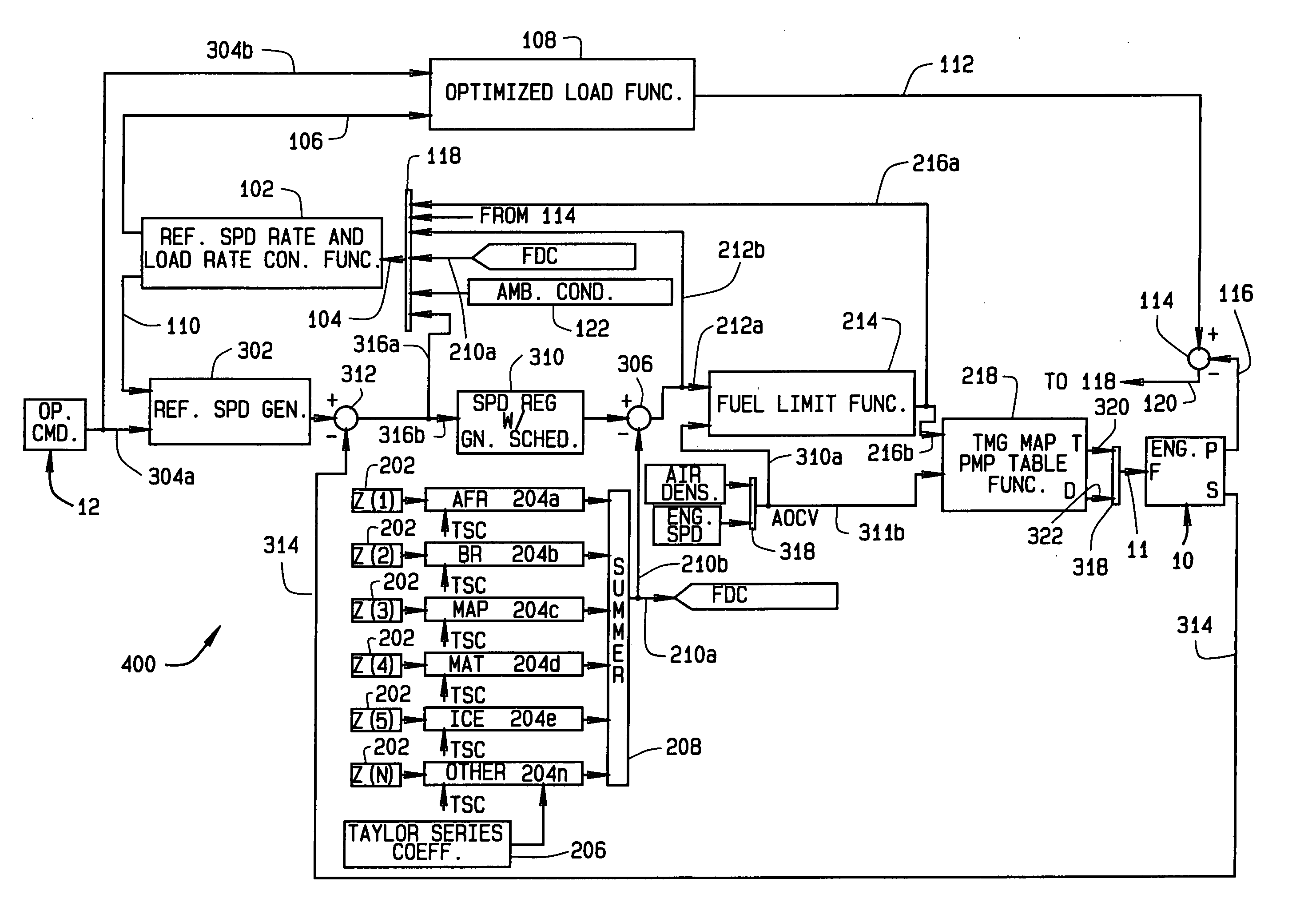Diesel engine control system with optimized fuel delivery
a technology of engine control system and fuel delivery, which is applied in the direction of electric control, speed sensing governor, speed sensing device, etc., can solve the problems of excessive amount of smoke the operation of the locomotive exceeding allowable emission standards, and the amount of power produced by the engine. it does nothing to increase the power produced by the engine, so as to promote efficient combustion of fuel and optimize fuel delivery
- Summary
- Abstract
- Description
- Claims
- Application Information
AI Technical Summary
Benefits of technology
Problems solved by technology
Method used
Image
Examples
Embodiment Construction
[0020] The following detailed description illustrates the invention by way of example and not by way of limitation. The description clearly enables one skilled in the art to make and use the invention, describes several embodiments, adaptations, variations, alternatives, and uses of the invention, including what is presently believed to be the best mode of carrying out the invention.
[0021] Referring to the drawings, the system and method of the present invention employ an architecture for dynamically controlling operation of a locomotive diesel engine 10. The architecture consists of two inner control loops indicated generally 100 and 200 respectively, and an outer loop indicated generally 300. Loop 100, which is shown in FIG. 1, generally comprises a primary feedback control consisting of a proportional, integral type controller with gain scheduling. This loop functions to regulate engine speed to a commanded slew rate based upon commands from an operator of engine 10. Second loop...
PUM
 Login to View More
Login to View More Abstract
Description
Claims
Application Information
 Login to View More
Login to View More - R&D
- Intellectual Property
- Life Sciences
- Materials
- Tech Scout
- Unparalleled Data Quality
- Higher Quality Content
- 60% Fewer Hallucinations
Browse by: Latest US Patents, China's latest patents, Technical Efficacy Thesaurus, Application Domain, Technology Topic, Popular Technical Reports.
© 2025 PatSnap. All rights reserved.Legal|Privacy policy|Modern Slavery Act Transparency Statement|Sitemap|About US| Contact US: help@patsnap.com



